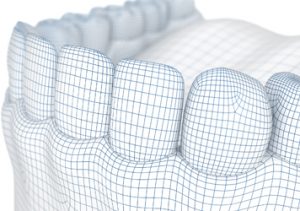
Periodontal Treatment
Experts believe that over half of the adult population in the US have gingivitis. If left untreated, gingivitis can lead to periodontitis (gum disease) and many other health problems. Gum disease can cause bleeding, swelling, bad breath, pain, receding gums, bone loss, and teeth mobility.
Periodontitis causes a buildup of bacteria between the teeth and gums. That bacteria can transfer to your bloodstream putting you at a much higher risk of developing many other health problems including:
- Stroke
- Ulcers
- Diabetes
- Arthritis
- Respiratory Disease
- Osteoporosis
- Heart Disease
What to expect during the periodontal treatment procedure?
There are several periodontal treatments available. Dr. Castiblanco and our experienced hygienists will determine your best course of action. Some options include:
- Scaling and Root Planning- Scaling and root planning is the careful and deep cleaning of the root surface to remove bacteria above and below the gum line. Local anesthesia can be used to dissipate any discomfort. You can have a limited or a full mouth deep cleaning depending on your pocket depths (pockets between your gum and your bone).
- Debridement- it is usually necessary when a patient haven’t had a cleaning in years. So it is necessary to do a cleaning prior to a deep cleaning in order to be able to measure the gums or even do an oral evaluation.
In some more severe cases, surgical options may be needed. These are usually done by a Periodontist (gum specialist). Some of the surgical procedures that may be right for you include:
- Laser Treatment- A more recent advancement in the battle against periodontal disease, lasers can utilize different wavelengths target the bacteria and deep clean your gums.
- Flap Surgery/ Pocket Reduction- The gums are lifted back and tartar is removed. If necessary, irregular surfaces will be smoothed out. This reduces the number of places bacteria can accumulate.
- Soft Tissue Grafts- This procedure fills in the gaps between your gums and teeth reducing the pockets for bacteria to hide. Grafted tissue most often harvested from the roof of your mouth is stitched into place.
- Bone Grafts- Fragments of your own bone, synthetic bone, or donated bone are used in this procedure. Bone grafts replace and help repair damage bone caused by gum disease.
